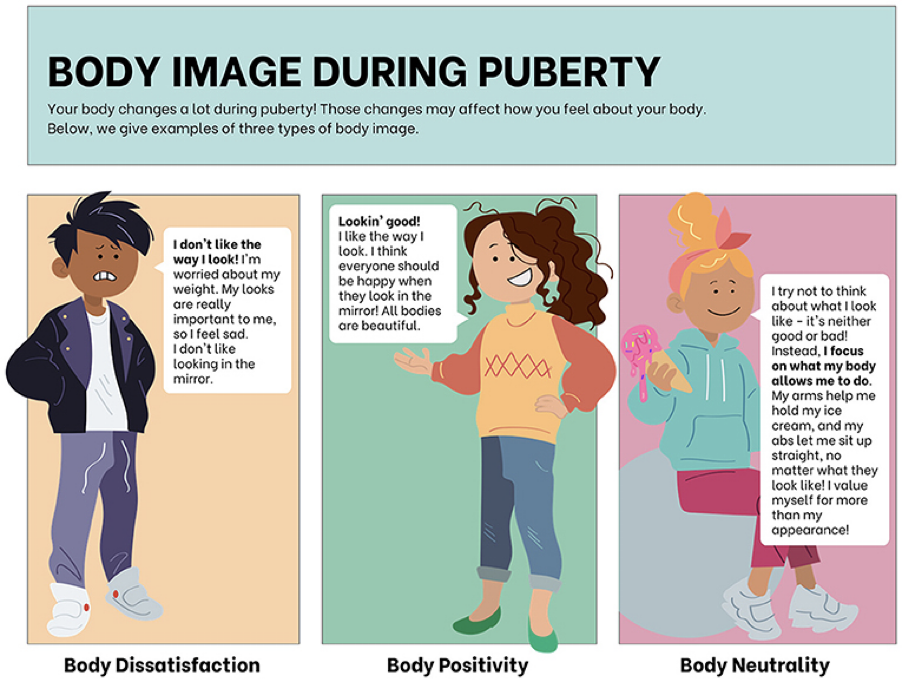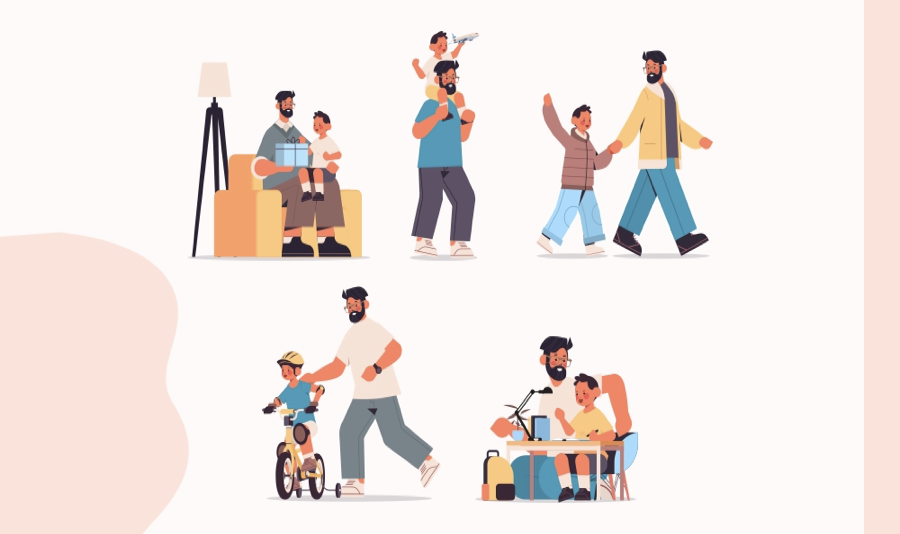 Introduction: The Bridge Between Childhood and Puberty
Introduction: The Bridge Between Childhood and Puberty
The transition from childhood to puberty is one of the most critical and transformative stages in human development. It’s a time when emotions, relationships, and identity undergo profound shifts. Imagine this phase as a whiteboard: every day, new thoughts appear—sometimes empowering, sometimes overwhelming. With compassion, these thoughts can be gently wiped away and replaced with healthier, more supportive ones.
Why this matters:
- Shapes long-term emotional health.
- Impacts academic and social growth.
- Determines how individuals cope with challenges later in life.
Puberty Is More Than Physical Changes
While puberty is often associated with visible physical changes, it’s equally about behavioural and psychological growth. Hormonal changes interact with brain development, leading to new patterns of thinking, feeling, and behaving.
Key domains impacted:
- Biological: Hormonal shifts, brain reorganization.
- Cognitive: Abstract thought, problem-solving, self-reflection.
- Social: Peer influence, family dynamics, need for belonging.
- Identity: Exploration of roles, values, and personal beliefs.
Major Behavioural Changes During Puberty
Emotional Highs and Lows
Adolescents often experience mood swings, emotional outbursts, or periods of withdrawal. These are driven by hormonal fluctuations and developing emotional systems.
Helpful approaches:
- Normalize emotions: remind them mood changes are natural.
- Encourage expression through words, journaling, or art.
- Teach them the “whiteboard method” for reframing negative thoughts.
Independence and Autonomy Seeking
Teens begin to push for independence, testing boundaries and questioning authority.
Ways to support:
- Provide safe opportunities to make choices.
- Collaboratively set boundaries and rules.
- Respect individuality while maintaining necessary safety guidelines.
Cognitive Leaps and Critical Thinking
Adolescents start thinking more abstractly and critically. This can sometimes turn into self-criticism or questioning of authority.
Strategies to help:
- Encourage open dialogue and curiosity.
- Teach self-compassion and resilience.
- Reframe mistakes as opportunities to learn.

Peer Orientation and Social Sensitivity
Peers gain significant influence, often more than family during this phase. Social validation becomes very important.
Supportive measures:
- Foster connections with positive peer groups.
- Role-play difficult social scenarios.
- Teach healthy social media practices.
Identity Exploration
This is when questions of “Who am I?” begin to emerge. Adolescents experiment with interests, values, and styles.
How to encourage healthy exploration:
- Allow space for safe experimentation.
- Avoid rigid labelling.
- Reinforce that identity develops over time.
Risk-Taking and Boundary Testing
Due to brain development, risk-taking becomes common. While this can feel worrying, it’s also a part of growth.
Constructive guidance:
- Channel risk into safe challenges like sports, arts, or competitions.
- Discuss potential consequences calmly.
- Teach refusal and boundary-setting skills.
Why These Changes Happen: Psychology Behind the Shift
Understanding the “why” helps adults respond with patience and empathy.
- Erikson’s Psychosocial Theory: Adolescents face the stage of Identity vs Role Confusion.
- Brain Development: Emotional centres mature before self-regulation centres.
- Family Systems: Secure relationships provide balance.
- Coping and Stress: External pressures require new strategies.
Common Challenges Adolescents Face
- Academic Pressure – Managing expectations, grades, and workload.
- Bullying & Peer Pressure – Online and offline conflicts.
- Body Image Concerns – Comparison with peers or media standards.
- Sleep Disturbances – Biological and lifestyle shifts reduce rest.
- Mental Health Struggles – Anxiety, low self-esteem, or depression.
Warning signs to watch for:
- Persistent sadness or irritability.
- Decline in performance or interest.
- Withdrawal from peers and family.
- Risky or harmful behaviour.
Positive Outcomes of Pubertal Changes
Puberty is not just about difficulties—it’s a stage full of opportunities.
Strengths that develop:
- Greater resilience and coping skills.
- Stronger empathy and perspective-taking.
- Creativity and problem-solving abilities.
- Autonomy, responsibility, and independence.
Role of Parents in Supporting Adolescents
Parents can make a significant difference by balancing boundaries with compassion.
Practical tips:
- Lead with curiosity instead of control.
- Establish clear, consistent boundaries.
- Treat mistakes as learning opportunities.
- Normalize counselling and mentorship.
- Use the whiteboard technique together as a family ritual.
Role of Educators in Shaping Behaviour
Schools are not just learning spaces but emotional ecosystems.
Educator strategies:
- Create predictable but flexible routines.
- Teach emotional literacy and communication.
- Recognize effort, not just results.
- Provide multiple ways to demonstrate learning.
- Collaborate closely with school counsellors.
Role of Counsellors and Therapists
Counsellors are central to helping adolescents’ transition smoothly.
How they help:
- Normalize emotional and behavioural changes.
- Teach skills like reframing thoughts, coping strategies, and communication.
- Work with families to align expectations.
- Focus on strengths rather than only problems.
- Provide culturally responsive, inclusive care.
Coping Strategies for Adolescents
- Whiteboard Reset: Notice the thought → Name the feeling → Wipe it → Rewrite with compassion.
- Two-Track Plan: Calm immediately (breathing, grounding) + build long-term skills (study habits, problem-solving).
- Social Media Hygiene: Set boundaries, curate feeds, reduce night-time use.
- Micro Habits: 10–20 minutes of daily study, physical activity, or kindness practice.
Cultural and Social Context
Behavioural changes aren’t universal—they vary across cultures, environments, and even timing.
- Cultural Influence: Family expectations shape independence differently.
- Early vs Late Puberty: Timing affects social confidence.
- Digital Life: Social media intensifies both opportunities and risks.
Key Takeaways for Different Audiences
- Students: Your emotions are valid—practice kindness toward yourself.
- Parents: Listen first, guide second.
- Educators: Focus on belonging before performance.
- Counsellors: Equip with evidence-based yet compassionate strategies.
- Professionals/Career Changers: Reflect on your own adolescence to connect better with youth.
Conclusion: Puberty as a Whiteboard Moment
Puberty is a stage of growth, exploration, and transformation. Behaviours that may seem confusing—mood swings, independence, risk-taking—are signs of natural development. With compassion, patience, and the whiteboard mindset, these moments can be reframed into opportunities for resilience and self-discovery.
- From “I don’t belong” → to “I’m finding my place.”
- From “I’m failing” → to “I’m still learning.”
- From “I’m not enough” → to “I’m growing every day.”
By providing the tools to erase negative thoughts and rewrite positive ones, we empower young people to navigate puberty with confidence, resilience, and compassion.
